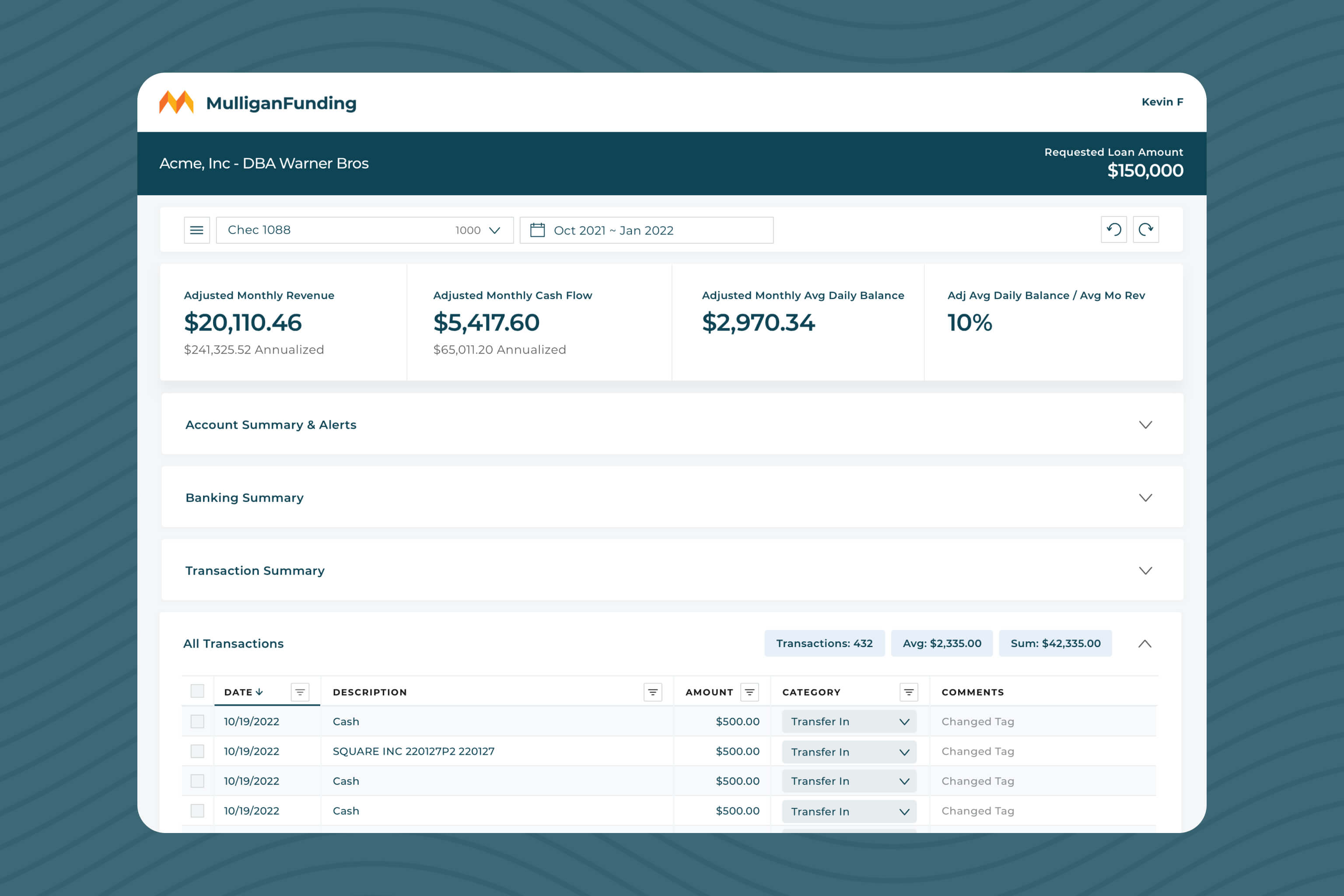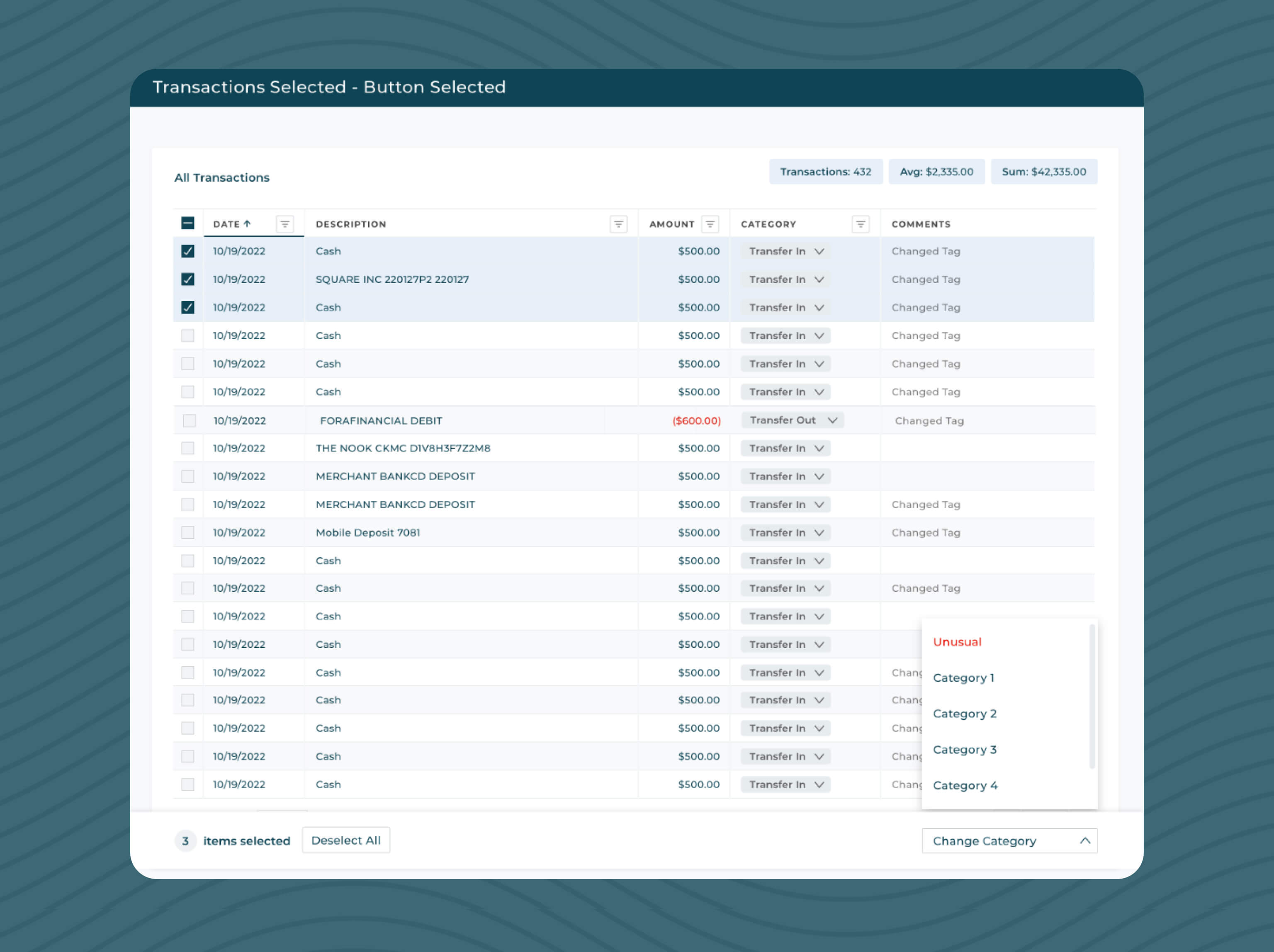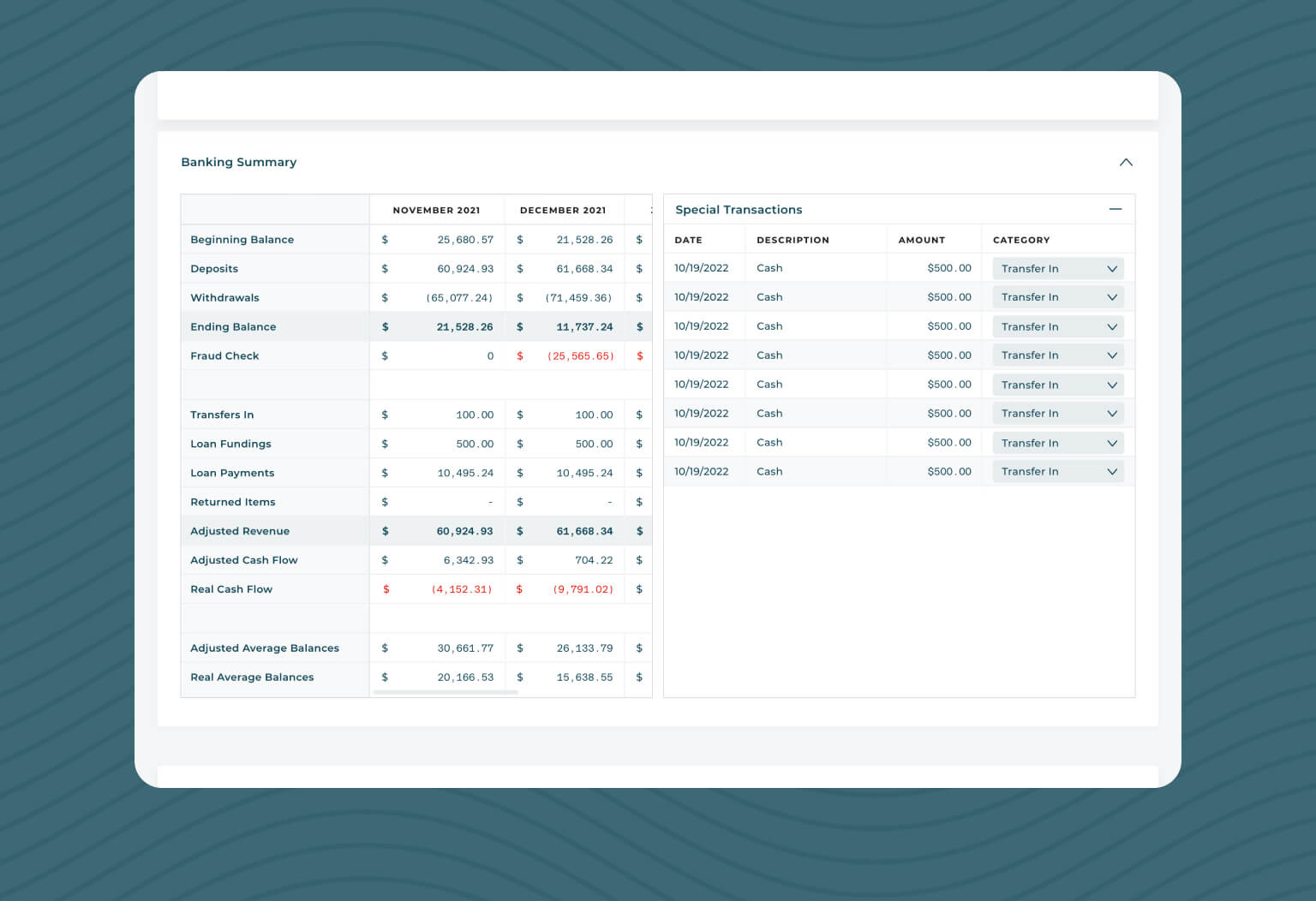Banking Data Dashboard
Reimagining the banking analysis process for underwriters in a web application.
Product Designer
Web
Underwriting
Dec 2021 - Apr 2023
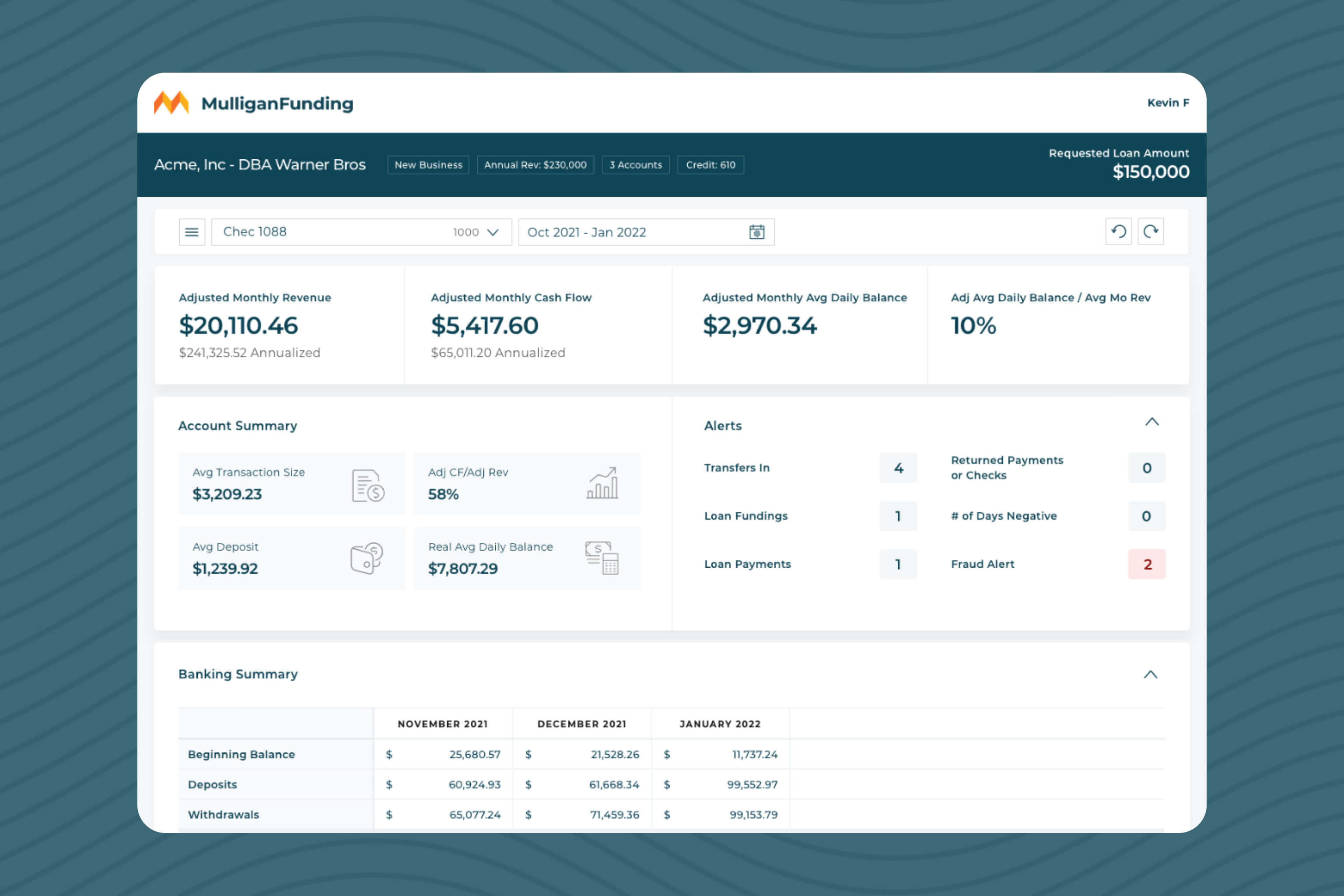
Overview
Introduction
Mulligan Funding serves as a provider of business loans and working capital loans to small and medium-sized businesses across the United States, reaching the milestone of 1 billion dollars funded at the end of 2022. Mulligan Funding prides itself in taking the time to understand each client’s situation and business goals to determine the optimum amount of capital they need.
This large initiative focus on transforming the bank data analysis experience for underwriters from spreadsheets to a web application platform, with the intent to bring functionality parity in the new user interface. Initially, early explorations revolved around building a full-on underwriting platform that would serve as a hub to not only review financial data, but to also review deal leads, merchant information and documents. After deeper analysis, the underwriting platform exploration was discarded and the focused became solely parity.
My Role
I partnered with the UX lead as we both spearheaded different features of this initiative. My responsibilities included product thinking, conducting in-depth UX analysis, crafting wireframes, refining visual design elements, creating interactive prototypes, and orchestrating user interviews. I collaborated closely with a team comprising the Chief Credit Officer, underwriters, a product manager, and engineers.
Features Worked On: Platform Layout Exploration, Transaction Categorization, Transaction Multi-Selection, Transaction Filtering, Transaction Commenting, Account Management, Activity Log
The Challenge
How might we reduce the time it takes underwriters to analyze banking information while allowing them to continue educated decisions on loan applications?
Third-party analysts grappled with labor-intensive manual data entry tasks, transcribing pdf bank statements into spreadsheets. This method was time-consuming, error-prone, and led to backlogs during periods of high application volumes. Additionally, dependence on these third-party analysts introduced data inaccuracies and hindered the team's ability to thoroughly assess key financial indicators. This situation created a pressing need for an automated, accurate, and efficient system to streamline the underwriting process, enabling precise analysis of banking data for loan applications.
The Solution
The solution involved the development of a user-centric web application tool, not only to review transaction data, but to also provide analytical features, allowing them to make informed decisions on loan applications efficiently. There was a strong focused on streamlining banking data in loan applications, encompassing transactions, balances, revenue, and cash flow. Integration of Optical Character Recognition (OCR) technology also enabled efficient capture and input of banking data, reducing manual entry and ensuring higher accuracy.
Moreover, the solution was released iteratively, starting with essential features in the first release and evolving through subsequent releases based on user feedback and refinements. The platform was also architected for scalability, aiming to accommodate future enhancements to align with the evolving long-term goals.
Video Demo:
Results & Impact
Data Quality Approval
An overwhelming 88.8% of underwriters expressed satisfaction with the quality of transaction data, indicating a substantial reduction in errors and data inaccuracies.
Post MVP Launch User Research
The 1.0 release received mixed feedback, with 44.4% positive ratings for the overall experience. This offered an encouraging outlook to determine upcoming features as disparities with the existing credit spreadsheet still posed visible challenges. Post-launch interviews provided valuable insights, guiding the prioritization of future releases and updates. Overall, the feedback affirmed the platform's potential, emphasizing the need for continuous enhancements.
Cultural Shift
The usage of this platform signified a shift towards a more tech-savvy operational culture with internally built products. In addition, the platform also set the stage for a scalable, efficient, and adaptive underwriting framework, ensuring long-term operational efficiency and improved user experiences.
Design
Features
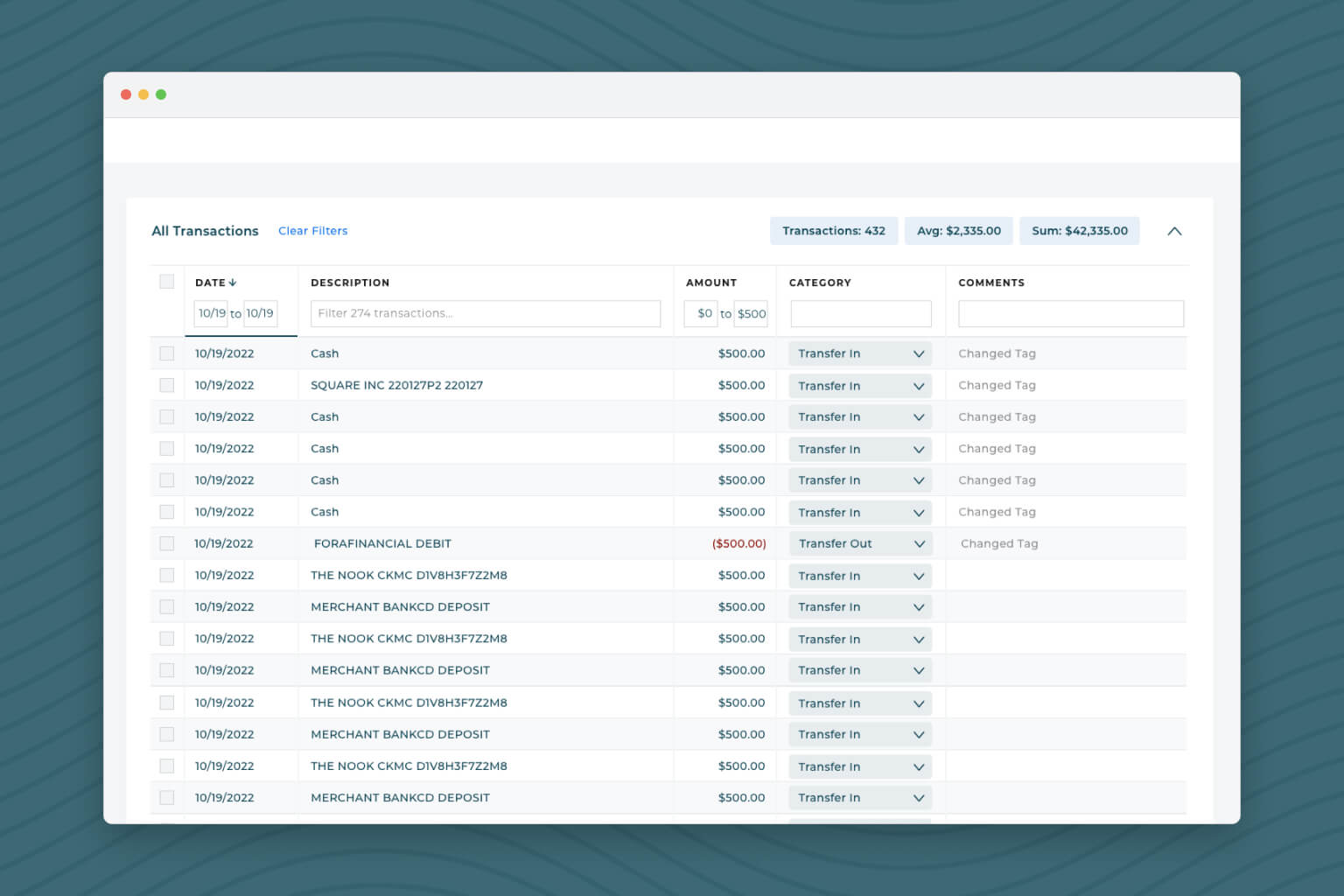
Transactions Categorization & Filtering
A robust system was implemented, allowing underwriters to categorize and filter transactions effectively, creating a detailed and accurate business profile.
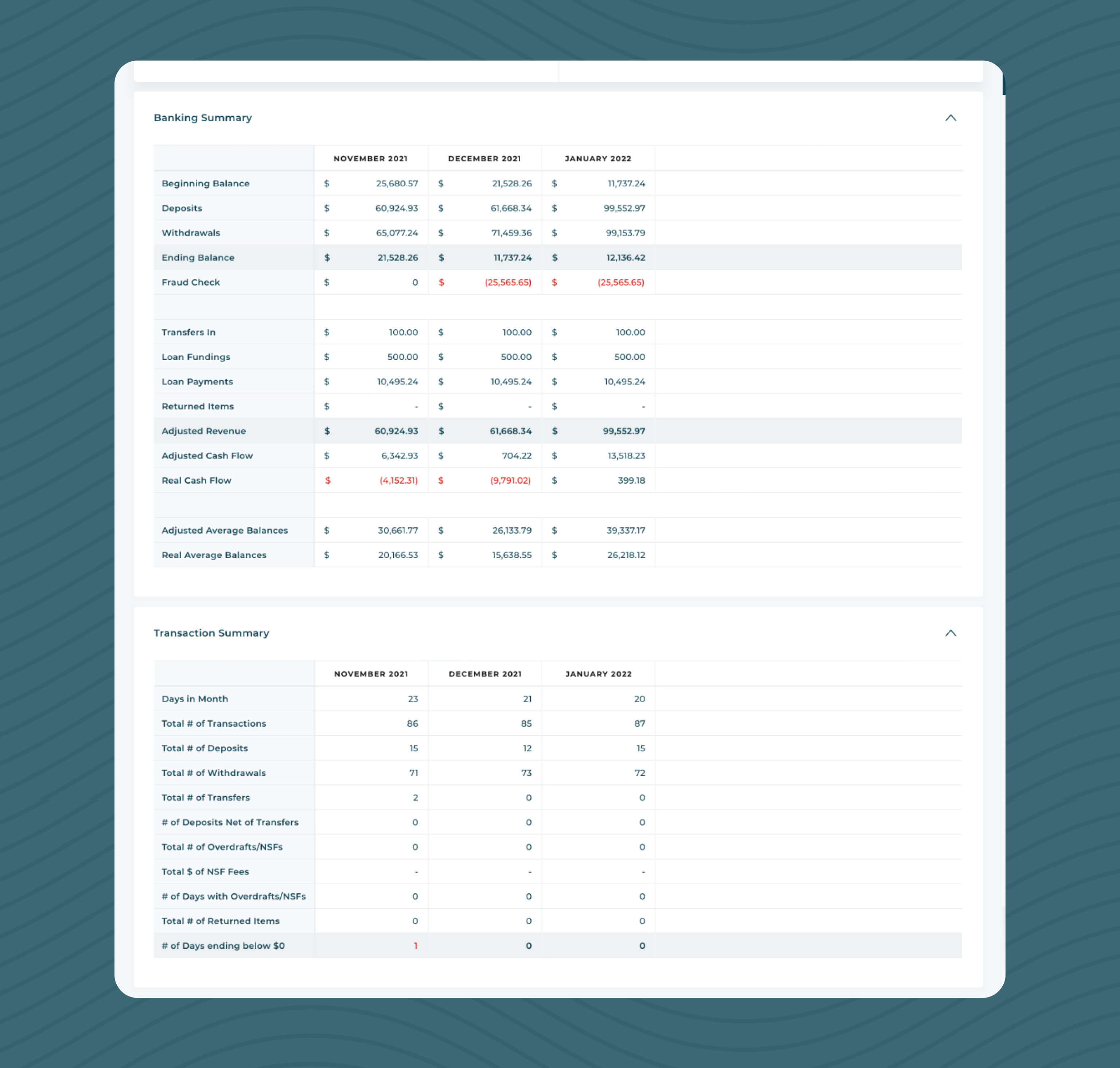
Banking Summary & Transaction Summary Tables
Introduced interactive tables, empowering underwriters to delve deeper into data without overwhelming them.
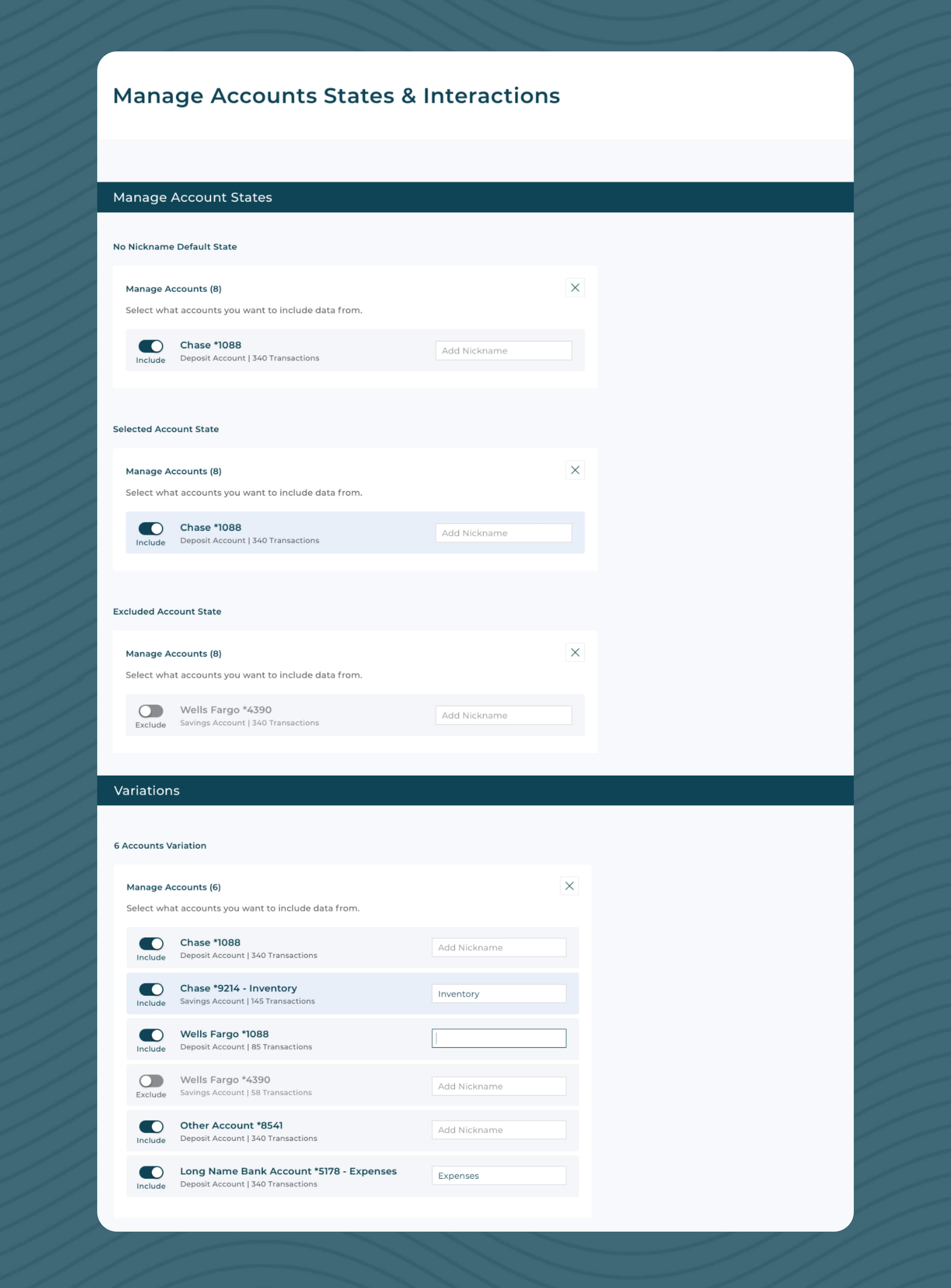
Manage Accounts Functionality
Allowed customization, acknowledging the diverse needs of underwriters dealing with various business types.
Design Principles
For this initiative, design was focused on the following principles:
Be Informative
Presented data comprehensively, empowering underwriters with essential insights.
Be Organize
Streamlined information, ensuring easy accessibility and a clutter-free interface.
Be Usable
Prioritized user experience, simplifying complex financial data for intuitive interaction.
Design Process Highlights
User Research
Conducted in-depth interviews and observed underwriters' workflows, gaining a profound understanding of their needs and challenges.
Brainstorming
Explored diverse layouts and features, aiming for innovative solutions that aligned with user requirements.
High-Fidelity Designs
Developed mockups, refining user interaction to align with the product vision.
Agile Development Collaboration
Fostered a collaborative relationship with developers, ensuring seamless translation of design concepts into functional features.
Conclusion
Next Steps
Achieving Parity With Spreadsheets
Focus on aligning platform functionality with the credit spreadsheet, ensuring a seamless transition for underwriters
Underwriting Platform
Expand the platform’s capabilities, integrating tools for background checks, online presence reviews, and trend visualizations.
User Feedback
Continue gathering feedback through interviews and usability testing, iteratively enhancing the platform based on user insights.
Reflection
Business-User Synergy
Maintaining a balance between business goals and user expectations was important to ensure that the delivered solutions meet both business objectives and user satisfaction, fostering synergy between the two.
User-Centric Approach
Regular user shadowing and feedback sessions were pivotal, guiding iterative improvements and reinforcing the importance of empathy-driven design decisions.
Agile Adaptability
Throughout the initiative, an agile mindset was embraced, allowing for flexibility in response to user feedback, ensuring the platform stayed relevant and valuable.
Other Projects

Online Loan Checkout

Banking Application Redesign

